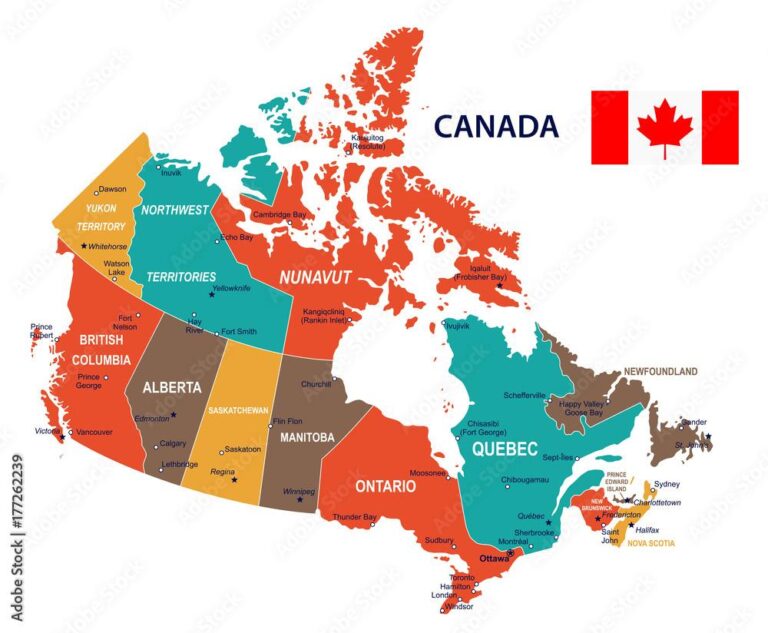As Canada seeks to broaden its trade partnerships and reduce reliance on traditional markets, experts warn that the country’s infrastructure must be upgraded to withstand the escalating impacts of climate change. According to a recent report from the Canadian Climate Institute, diversifying trade routes and supply chains alone will not secure Canada’s economic future unless critical transportation, energy, and logistics systems are made climate-resilient. The institute emphasizes that without targeted investments in infrastructure capable of withstanding extreme weather events, rising temperatures, and other climate-related disruptions, efforts to expand international trade could face significant setbacks.
Canada aims to expand trade partnerships amid shifting global markets
Amid evolving global trade dynamics, Canada is actively pursuing a more diversified network of international partners to safeguard its economic future. The Canadian Climate Institute emphasizes that while expanding these trade routes is critical, equal attention must be paid to strengthening the country’s infrastructure to withstand climate change impacts. Without resilient transport corridors, ports, and energy systems, new trade partnerships may face operational disruptions, undermining long-term growth opportunities.
- Investment in climate-resilient infrastructure: key ports, railways, and highways must be upgraded
- Innovative green technologies: integrating sustainable practices into trade logistics
- Collaboration with provinces and private sectors: essential for coordinated climate adaptation efforts
| Trade Region | Infrastructure Challenges | Climate Risks |
|---|---|---|
| Asia-Pacific | Port congestion & outdated cold storage | Rising sea levels & extreme storms |
| Europe | Rail network bottlenecks | Heatwaves & flooding |
| Latin America | Road degradation & supply chain gaps | Severe droughts & landslides |
Infrastructure gaps threaten Canada’s climate resilience and trade ambitions
Canada’s ambitious plans to broaden its trade partnerships hinge critically on modernizing and expanding its infrastructure to meet future climate challenges. Current transportation networks, ports, and logistics hubs are increasingly vulnerable to extreme weather events, flooding, and temperature fluctuations. Without substantial investment in resilient infrastructure, supply chains risk costly disruptions that could undermine Canada’s competitiveness on the global stage. Experts warn that bridging these gaps is essential not only to support trade diversification but also to safeguard the economy from climate-induced shocks.
Key infrastructure needs include:
- Upgrading coastal ports to withstand rising sea levels and storm surges
- Enhancing rail and road networks for durability against extreme temperatures and precipitation
- Implementing smart, climate-adaptive logistics technologies to optimize supply flow
- Investing in green energy infrastructure to reduce the trade sector’s carbon footprint
| Infrastructure Type | Climate Risk | Trade Impact | Priority Score |
|---|---|---|---|
| Ports | Flooding & Storm Surges | Delays & Damage to Cargo | 9/10 |
| Rail Networks | Track Warping & Erosion | Transport Interruptions | 8/10 |
| Roads & Highways | Heat Damage & Flooding | Fueling Supply Chain Bottlenecks | 7/10 |
| Energy Infrastructure | Power Outages & Capacity Limits | Reduced Operational Efficiency | 8/10 |
Experts call for targeted investments to align infrastructure with climate goals
Leading climate analysts emphasize that meeting Canada’s ambitious trade diversification goals hinges on upgrading infrastructure that can withstand the realities of climate change. Experts argue that without strategic investments aimed at resilience and sustainability, new trade routes and facilities may falter under increased climate stressors such as flooding, wildfires, and extreme weather events. This calls for a bold approach that prioritizes climate-adaptive technologies and materials, ensuring that infrastructure not only supports economic growth but also drives down greenhouse gas emissions.
Key investment areas identified include:
- Climate-resilient ports and rail networks designed to operate under extreme weather conditions
- Green energy integration to power logistics hubs with minimal carbon footprints
- Smart infrastructure that leverages data for real-time environmental monitoring and adaptive management
| Investment Category | Projected Impact | Timeline |
|---|---|---|
| Resilient Transport Corridors | Reduced disruption, quicker recovery | 2025-2030 |
| Renewable Energy Upgrades | Lower emissions, energy security | 2023-2028 |
| Smart Monitoring Systems | Proactive risk management | 2024-2027 |
Future Outlook
As Canada seeks to broaden its trade partnerships and reduce economic reliance on traditional markets, building resilient infrastructure that can withstand the impacts of climate change emerges as a critical priority. The Canadian Climate Institute’s report underscores that without significant investments in climate-adaptive infrastructure, efforts to diversify trade may fall short of their potential. Moving forward, policymakers face the challenge of aligning economic ambitions with sustainability imperatives to ensure Canada’s trade corridors remain strong and reliable in a changing climate.




